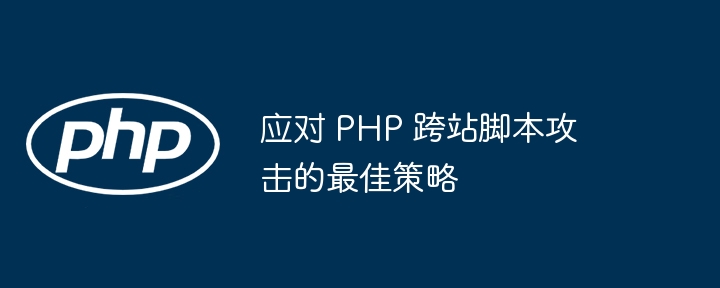
To combat XSS attacks in PHP, best strategies include validating user input using PHP functions such as filter_var() and htmlspecialchars(). Encode HTML output before display (using the htmlentities() function). Add Content Security Policy (CSP) headers to your application.

A cross-site scripting attack (XSS) is a type of attack that allows attackers to exploit malicious A situation where script is injected into the user's browser. PHP applications are particularly vulnerable to this attack because it is a popular web development language designed to parse and process user input.
To deal with XSS attacks in PHP, it is crucial to implement an effective defense strategy. Here are the best practices:
Thorough validation of all user input is critical to preventing XSS attacks. Use PHP built-in functions such as filter_var() and htmlspecialchars() to filter and sanitize input. This helps prevent malicious scripts from bypassing application defenses.
Encode the HTML output before displaying it to the user. This will help neutralize any malicious code and prevent it from executing in the browser. PHP provides the htmlentities() function to encode output.
CSP is an HTTP header that specifies which resources the browser can load from a specific source. By adding the Content-Security-Policy header to your application, you can restrict external scripts and stylesheets, thereby mitigating the risk of XSS attacks.
Consider the following sample PHP code, which validates and encodes user input through the htmlspecialchars() function:
<?php // 获取用户输入 $user_input = $_GET['input']; // 验证用户输入 $filtered_input = filter_var($user_input, FILTER_SANITIZE_STRING); // 编码用户输入 $encoded_input = htmlspecialchars($filtered_input); // 在 HTML 输出中显示编码后的输入 echo "<p>您的输入是:$encoded_input</p>"; ?>
In the above example , user input is first filtered using filter_var() to eliminate any illegal characters. The input is then encoded using htmlspecialchars(), thereby defusing any malicious code and preventing it from executing in the browser.
By implementing these best practices, you can significantly reduce your PHP application's risk of XSS attacks. By validating input, encoding output, and implementing CSP, you can create more secure and resilient web applications.
The above is the detailed content of Best strategies for dealing with PHP cross-site scripting attacks. For more information, please follow other related articles on the PHP Chinese website!
 How to repair lsp
How to repair lsp
 Digital currency quantitative trading platform
Digital currency quantitative trading platform
 How to open the download permission of Douyin
How to open the download permission of Douyin
 Detailed explanation of netsh command usage
Detailed explanation of netsh command usage
 What is the difference between ibatis and mybatis
What is the difference between ibatis and mybatis
 hiberfil file deletion method
hiberfil file deletion method
 Why do all the icons in the lower right corner of win10 show up?
Why do all the icons in the lower right corner of win10 show up?
 Five major components of a von Neumann computer
Five major components of a von Neumann computer




